Parallel and Alternate Realities; Fiction Tells us the Difference
We hear the following terms all the time: Parallel Reality, Alternate Universe, bad ending, good ending. Physicists love to sit back in their arm chairs with mugs of hot chocolate, postulating on the possibilities of the multiverse, branching realities from a singularity. A Prime-Universe. Nerds will often talk about alternate and parallel universes in terms of the media. Any X-Men fan can talk about all the numerous alternate universes that cropped up in the continuity during the 80’s and 90’s (often requiring a little bit of time travel to patch up).
Huge ideas. Big concepts. Whatever. The point of the matter is that these terms can be a little much to take in. One can be forgiven for thinking they are the same thing, and, in turn, not totally understanding the difference.
But there is a difference.
The Difference
The difference is in the name. It’s time to nitpick the difference between parallel and alternate.
Let’s articulate the difference in words first before we find examples. This requires a little bit of nitpicking. Parallel things run parallel. They share the same qualities, but never intersect, while alternate things…don’t. Alternate things are very similar to each other, except for a few differences. You would never play a fighting game with your friend, and each of you chose the same character, and say, “Oh, I’ll choose the parallel costume!” No, you’d say, “Oh, alternate costume!” Or something like that, anyway.
Parallel realities are realities that are similar to the Prime-Universe (the “main” universe), but are substantially different. Alternate realities are alternate paths the Prime-Universe could take. The Alternate Universe is similar to the Prime-Universe, except for one key incident that branches the universe apart.
An Alternate-Universe version of WWII is the one where Hitler went to art school instead of being a dictator, or where Hitler won the war. A Parallel-Universe would be the one where the war was fought with dragons and unicorns, or took place three centuries earlier.
That is the difference in a nut-shell. However, like most nerdy discussions, one is probably wondering how he or she can apply this information to a practical (read: nerdy) application.
The Marvel Multiverse
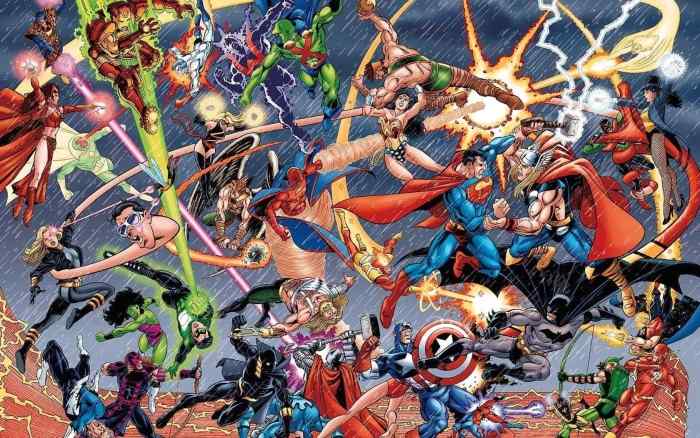
Terrific examples of both Alternate and Parallel Realities occur in comic books with some regularity. While DC has 52 Parallel Realities, Marvel’s Multiverse is so complicated that the entries number in the hundreds of thousands!
Marvel’s Multiverse consists of great examples of this. The central universe for Marvel is designated as Earth-616. The rest are a hodgepodge of alternate and parallel realities.
One of the most famous of Marvel’s Alternate-Realities is the Days of Future Past universe (Earth-811), made more well-known by the recent movie, X-Men, Days of Future Past. The point of division from the main 616 Timeline is the assassination of a major political figure (in the comics it’s Senator Robert Kelly, while in the film it’s Bolivar Trask) by the mutant Mystique (or, more specifically, Mystique’s Brotherhood of Mutants in the comics). In both the film and comics ,a character is sent back in time to stop the assassination, which divides the timeline further. This is one of numerous alternate timelines the X-Men ends up dealing with over the years. Another well-known universe is the Age of Apocalypse timeline (Earth-295), where Professor X is assassinated by a time-traveler, and, without the X-Men, Apocalypse takes over the world.
What those timelines have in common is that some element present in Earth-616 is removed or obliterated, which results in reality spiraling out into a different path.
As for parallel realities, Marvel has the Ultimate Universe (Earth-1610). The Ultimate Universe features most of the characters from Earth-616, yet places them all in different points in time, with different personalities, events, origins, etc surrounding them. The Fantastic Four are collectively younger, Spider-Man’s origin is intertwined with that of the Green Goblin, Wolverine is a bigger asshole, Captain America is a racist, Iron Man is a low-functioning alcoholic with an abnormally large brain–etc. Oh, and the Maximov twins have incest…eww.
Remakes, Reboots, and Sequels – Parallel Universes? Alternate Realities?
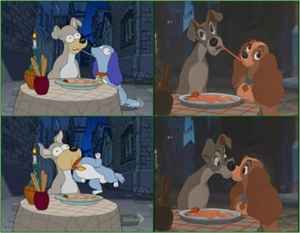
Another very accessible way of understanding Parallel Universes is to take the concept of remakes and reboots into consideration. Many reboots and remakes can easily be interpreted as Parallel realities that are separate but similar to its mainstream counterpart. But, in some occassions, even sequels can prove so difficult to follow that it becomes apparent that the filmmakers have created a separate alternate timeline.
For horror movies, continuity can sometimes be difficult to follow. Many horror franchises, at some point, establish the concept of both Parallel Universes and Alternate Realities (though not always clearly). Nightmare on Elm Street consists of nine films. Seven of them take place in a linear continuity, but two entries do not. One is Wes Craven’s New Nightmare, which takes place in the “real world,” and features a demon taking the form of Freddy Krueger to pray upon the cast and crew from the original film. The other is the remake from 2010, which exists as a parallel reality to the original.
On the other hand, Halloween‘s continuity is incredibly confusing. Most of the films acknowledge the events from the first two films, but films 4-6 exist in an alternate reality from films 7-8. In 4-6, Laurie Strode, the heroine from the first two movies, dies in a car accident, and Michael Myers pursues Laurie’s daughter, Jamie. In 7-8, however, Laurie is alive and well, and trying to move on from the events of the first two films. There is no Jamie. Films 9-10 are in their own parallel reality that recycles only broad ideas from the earlier films, and places them in an entirely new setting. The third film, Halloween: Season of the Witch, is so far removed from anything that happens that it’s hard to place in any of the timelines. However, in one scene, the original Halloween is played on television, so it is clearly another parallel world removed from the others. That’s four–FOUR–separate universes in one franchise. To say nothing of The Texas Chainsaw Massacre series, where every film basically takes place in its own separate reality.
But it could be so much more confusing.
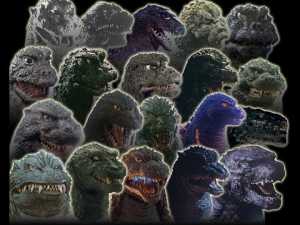
There are close to thirty Godzilla movies in existence, but that is not to say that all of them are in the same canon. Fans often point to four distinct eras of films. From the 50’s-70’s, the films take place in the Showa Period. The 80’s-90’s films are the Heisei Period. 00’s–Millenium Period (though these films are harder to pinpoint since it can be argued that each film is in a separate continuity). And the newest film, Shin Godzilla, is the start a new era. The two American remakes both take place in separate continuities. That makes at least 5 separate continuities. In ONE franchise! Many of these continuities, however, all loosely acknowledge the presence of the original film. To make matters more confusing, the monster from Godzilla (98) appears and is mentioned in a couple of the Millenium Period films, most notably in Godzilla Final Wars. However, in Godzilla (98), no such mention is ever made of other monsters, as would have to be the case in the Millenium Period. Which means that Godzilla (98) both happens in its own continuity AND in the various Millenium continuities. Confused yet?
Let’s not even get started on the James Bond series. That series’s continuity makes so little sense it’s hard to even acknowledge it as a continuity.
Even superhero films aren’t exempt from this. The Superman franchise consists of numerous Parallel Realities. Man of Steel has nothing to do with Smallville which has nothing to do with Christopher Reeves’s Superman series. However, like the Halloween saga, after the first two films, the continuity splits. Superman III and Superman IV (and Supergirl) exist in a separate continuity from Superman Returns. In Superman Returns, Superman leaves Earth after the events of the second movie to search for the remains of Krypton. He returns to find Lois Lane with a child and married. This clearly does not mesh with any of the prior films, save for the first two.
The Marvel Cinematic Universe exists as a Parallel Reality to Earth-616. It is referred to as Earth-199999. Seriously.
Alternate Realities as a Saving Throw

There are many times where a story might disappoint viewers. An episode may disappoint fans. A sequel might feel off.
Fans of the Japanese anime Dragonball often regard the third series in the franchise, Dragonball GT, as a complete failure. Fans did not enjoy the way the characters were written, things didn’t make sense, and, above all, it didn’t follow up on the greatness of the first two series. Fast-forward several years. Akira Toriyama, the original creator of the series, conceives of a series of animated films and a new series, Dragonball Super, which completely contradicts GT, and serves to erase it from memory. Many fans rejoice, but, by this point, GT had a few fans who regarded it as an inferior but enjoyable sequel.
Good news. GT is still canon…in an alternative reality. Both GT and Super exist as sequels to the first two series. They are simply different paths the characters can take. Both are equally valid, but both branch off from the original reality in creative and fascinating ways. Super even toys with the idea of Parallel Realities directly.
This interpretation of alternate and parallel realities opens up a new understanding of the concept. One that, thankfully, does not alienate fans of a franchise, but rather encourage theorizing for fun.
Let’s Breathe a Second Here…
The difference should be sinking in between the two concepts. There are countless examples, but, by that point, it becomes much like beating a dead horse.
Alternate and Parallel Realities are fascinating elements of fiction and story telling. In many respects, they enhance how one can appreciate and enjoy a franchise. If there’s something that doesn’t make sense–a plot hole, perhaps–think of it as a signal that you are in an alternate reality, one where this thing, whatever it may be, has divided reality itself. It makes fiction far more enticing and fascinating, and, in some respects, more enjoyable.
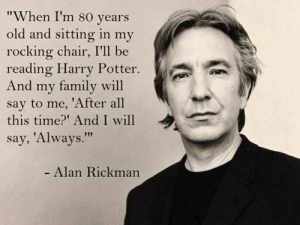
What do you think? Leave a comment.







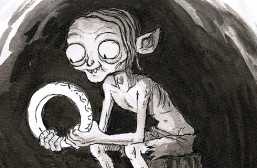


A parallel universe is an Alternate Reality, but not the other way around. a parallel universe refers to a universe largely like our own, and is “close ” to us in the Multiverse. an Alternate Reality is a universe not like our own.
Or thats my understanding.
Kinda sorta. 🙂 I see alternate as something that branches off of the main universe, while parallel is largely like ours but with some key differences on a fundamental level.
I understand the difference and I agree as to how you understand it as well nell. This is a fantastic write up agramugl
Fantastic article.
The terms are essentially interchangeable; some people may make distinctions, but there is no consensus.
I think of an alternate universe as a line that as it progresses through time more and more branches “generate” from the “original” line.
My understanding is that parallel universes suggest that the universe is very close to our own with almost matching events but in a different universal space from ours (ie. our universe is in bubble A; parallel universe is in bubble B).
Alternate realities is based on the idea that there is a fork in the road for every action (some argue major/key events) which results in different realities each being a version of each possibility.
They’re the same thing i think, just different names.
An alternate timeline is when someone has gone back in time and changed something, like in Continuum.
When Ba’al went back in time and stopped the gate from getting to America which stopped them ever going through it and stopped them defeating the Goa’uld etc.
An alternate reality / parallel universeis another universe that we haven’t changed but is different in a way. In There but for the Grace of God, Daniel went to a parallel universe. Basically where something didn’t happen as it did in ours.
I’ve always understood them to be essentially the same thing. To my recollection Stargate never called them “parallel universes” or established any difference from alternate realities. But the concept of both is that a reality is created every time there’s the potential for divergence – a person chooses x, therefore a reality exists where they chose y and where they chose z.
Stargate always deals with alternate realities which they also call alternate universes (and AU is the fanfic term for these) and they’ve never really examined what the theory on parallel universes is in terms of the wider Stargate story fabric.
A big difference is that parallel universes (as the name suggests) never touch each other.
The only line needed to understand. Well done.
A PERFECT example of all of this would be the “Butterfly Effect” movies, somehow the protagonists can travel between different lines of the same but ALTERNATE universe…
Fantastic article! I especially loved the examples you gave. I think you cleared up some muddling ideas or conceptions between the two terms. They are definitely used interchangeably sometimes and it’s occasionally difficult to pinpoint exactly which one should be used where.
Parallel universe and alternate universe can be distinguished. I’m having in mind the many-worlds interpretation and other multiverse interpretations in the field of quantum physics. In a nutshell, such hypotheses posit that all alternate or “what-if” histories, both that have already occurred and will occur in the future, take place in real life, just that they’re in parallel universes or alternate universes. This way, “what-if” histories don’t have to be restricted to the realm of a fictional alternate space in this universe – in other words, not restricted to the conditional, as in to the “could have been”, “would be”, etc.
And multiverse theories could serve to reduce, if not eliminate, the suspension of disbelief in terms of alternate histories. It’s possible that there’s an infinite number of such universes in the cosmos.
I love FRINGE.
There is no difference, they are the same.
Maybe they’re not ‘officially’ different, but there are certainly two distinct types (with different narrative functions), and they’re useful to distinguish when analyzing fiction (and pretty entertaining, too). Just silly/fun nerd talk.
Neither has an “official” definition.
Parallel universes are ones which are a very close or in fact an identical match to each other.
My advice: Watch Steins;Gate if you want a clear concept on this topic. Thank me later 🙂
Writers aren’t very strict when it comes to these two particular terms. Most of the time, the two terms are interchangeable, unless they’ve been defined to be different within that continuity.
True. For example, in Star Trek, the word “parallel” is taken to mean “alongside”, not that the two universes developed in parallel/mostly in parallel. They have timeline splits for universes that were identical up until the divergence point, an antimatter universe that appears to be otherwise completely identical to ours, and at least one “parallel universe” that’s on a difference plane of existence.
Still confused as to the difference to a parallel and an alternate universe in the scheme of things, but still a fascinating article
You can’t have your cake and at it, too.
I’m not sure if Parallel necessarily demands that the universe be similar though fundamentally different from the Prime Universe. A parallel, definitively speaking, is simply something that runs beside and never intersects, it does not comment on the quality of each of the two things running in parallel. For example:
PPPPPPPPPP
LLLLLLLLLL
Those rows of P’s and L’s are running parallel to each other but bear no relation to each other apart from direction and the fact both rows consist of symbols from the alphabet. To convert the conceptual relation to spacial: two parallels don’t even need to be CLOSE to each other, they can be miles apart, but so long as they are consistent in direction and never intersect, they are parallel.
In terms of events happening in the two different universes, what actually takes place within them does not matter to whether it’s parallel or not, the fact that the events contained in each universe are held in their own timeLINES running parallel to each other is what makes it parallel.
So that being said, would a parallel universe necessarily need to be similar to the Prime? Would a parallel universe have to have a world war 2, whether it’s fought by dragons or whether it takes place in a different century?
By definition of ‘Parallel’, I don’t think so.
But I guess Parallel being appropriated into the more specific term, ‘Parallel Universe’, maybe? In that case, though, what word is given to a reality that never intersects with the Prime but also holds little to no similarities?
Great article! I can imagine arguing about this with people later tonight… Parallel universes always remind me of the TV servies ‘Sliders’ where the first universe only had the smallest change of a red light meaning ‘go’ and a green light meaning ‘stop’.
This was really interesting. I like reading about parallel universes just because i know there has to be something else out there
I understand the article’s position on Parallel and Alternate Universes but I am interested in how we decide which alternate universe gets to be Prime. Is it the first one we encounter in a franchise, does the creator get to decide, or do scholars figure it out somehow?
In keeping with the pedantic nature of this explanation, which is half the fun, I’d like to throw in the word “dimension” in the pot and stir. Often I hear “dimensional universes” used apropos of parallel universes, so I wonder what the treatment of this term might be, given the nerdy lexicon to which we all happily subscribe…
I’ve always thought of a dimensional universe to be something like a “pocket reality.” Like it’s a space where physics or space is in some way radically different. However, I don’t really have any evidence for why I thought that, and most definitions I can find seem to consider a dimensional universe to be the same thing as either a parallel or alternate reality.
I love marvel!
it’s also interesting to consider the way a physics-based interpretation of these differences can intersect with a literary/fiction-based approach
Cool article!
I have never truly explored the difference between parallel and alternate universes, nor indeed realised the exact definitions of each. This is a truly insightful read, and gives pause for thought in regards to the discussion of multiverses and other dimensions.
I am a Science Fiction lover and do believe in Parallel Universes and Alternate Realities. Science Fiction stories are stories that tell an unknown truth about our world that many people are afraid of and others just do not believe in. If many of the Science Fiction Authors came out and said that these were known events then they would be criticized as being mentally insane so they cover their stories in a sheet of fiction. We also now discovering many of the Science Fiction stories are true. We live in our world but in other parallel worlds and Alternate Worlds, there are mystical creatures living that only show themselves when the gateways are open but they will always close again.
This was interesting article with some engaging subject matter, and provided a fairly tight distinction between two different types of separate universe.
I think you could probably have explored the subject deeper, and possibly looked at the varying ways science has been used to justify a parallel or alternate universe. There also wasn’t much exploration of the distinction between those things and a commercially-motivated remake (you mentioned all the movie adaptations of Superman – this would have been a good paragraph to put it in).
Other than that, I liked the article. Thank you for sharing 🙂
Marvel is far superior than DC.
Whew, I need to come up for air… Actually though, great job on explaining parallel vs. alternate universes. I particularly liked your discussion of remakes, and alternate/parallel universes as an author’s saving throw.
A great article, I think the way DC and Marvel was used to describe a concept so vast was pretty smart and could be related by all!